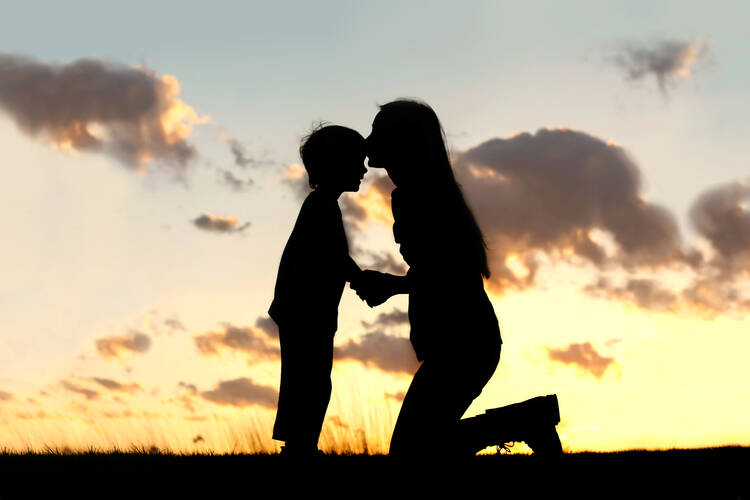Oh, how I love a shared existence, a shared self. It is a return to my natural state: the plural.
Despite only recently earning the title, motherhood was not new to me. My body, my mind, my time are not my own. They belong to another as much as to me. I don’t resent this; I revel in it. How can you resent what is true? Besides, these were never mine—anytime I felt they were was a farce. I started out split in half; I began by being shared.
Twins have language and love for contingent souls, conjoined lives, commingled ontology, but this is not just for me and mine. This is the stuff of every human life. To live in the plural. To speak for and be spoken for in the we. It is the most ordinary we in the world—it is the opposite of royal. We didn’t sleep well last night, did we, darling? It is common. It is dust. It is dirt. It is the ground beneath our feet. The air we breathe. It is the fabric of our world, woven so meticulously into our shared psyche and soul that we have always assumed the steady pierce of the needle threading it all together was just the pulse of our own heartbeat. (Isn’t it, though?)
Despite only recently earning the title, motherhood was not new to me. My body, my mind, my time are not my own.
Being a mother and being a twin are sister states: to be caught up in, inextricably intertwined with, dependent and depended on the existence of another. To be mother and child (and child, and mother) is to be myself but twice. So, too, a twin: an egg, split. To be creator and created. To be lover and beloved. The plural is the eighth sacrament. Every night the font of motherhood empties, and every day it refills—brimming with the liquid of every leak and tear and spill. Ever ancient, ever new.
Remember when you lived in my body? I do. You would hiccup every morning at 5 a.m., and the air bubbles in your diaphragm would ping, gently—like the lazy thud of a rubber band that has lost its elasticity—against my womb. To experience hiccups but vicariously. Is there evidence of an existence more shared? Is there a picture of the splitting egg? Or the moment when a soul meets its maker? Is there an image across time and space and every dimension of the binding of all souls to each other, to God? I would be interested in an illustration.
Thank God for motherhood, for twinship, which both lift the veil on separateness, that tempting interpretation of the way things are. I am not your creator, darling. Only your companion in creation: contingent souls, conjoined lives, made of the same matter. Our being is bound up, not made for separation but tumbling, together, toward the beatific—that ultimate binding.










